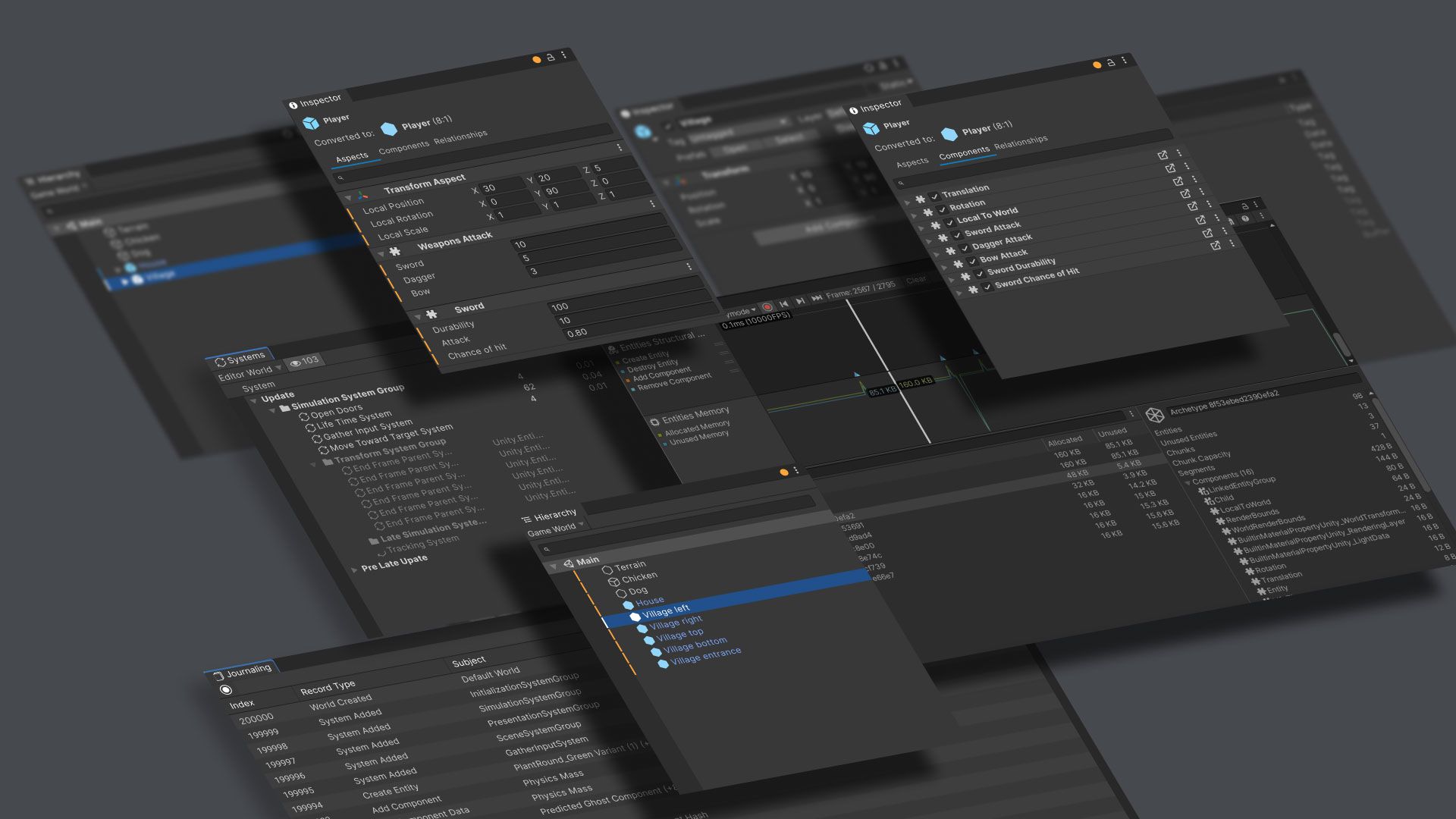DOTS Best Practices
If youŌĆÖre working on a game (or other real-time simulation) that requires the most efficient CPU usage possible, then UnityŌĆÖs Data Oriented Technology Stack (DOTS) is a great way to get the performance you need. However, to use DOTS successfully, you canŌĆÖt simply grab the API documentation and dive straight in. Before you begin creating a project with DOTS you must understand the following:
The
fundamental concepts of data-oriented design
Data-oriented design in Unity
The best practice advice in this guide
Data-oriented design
(DOD) is a big change from the
object-oriented programming
(OOP) that many developers have spent their whole careers working with. This means that the learning curve for DOTS might be steep, and there are a lot of pitfalls that might stop you from getting the performance benefits you hope for. This Best Practice Guide contains advice to help avoid those pitfalls.
Sections 1 and 2 of this guide explain the fundamental knowledge you need to understand before starting to build DOTS applications, and the biggest obstacles to achieving good performance. Later sections contain techniques that you can use to squeeze even more performance out of the technology, but you must have a fundamental understanding of the basics to get good use out of them.
NOTE: This guide is not intended to be a comprehensive tutorial to all aspects of building a DOTS-based application. The primary focus of this guide is to help you obtain the best possible runtime performance in code written using the DOTS packages, with a particular focus on the Entity Component System. As such, there are many topics which fall outside the scope of this guide and are not covered in detail or mentioned at all. Here is an incomplete list of topics which arenŌĆÖt covered here:
In-depth discussion of features which were primarily used in older, experimental versions of the Entities package, such as
SystemBase
and
Entities.ForEach()
How to use the
Baking
system to author and convert entity data
How to create and use
BlobAssets
to represent memory-ready, read-only data
Some newer convenience features such as
Aspects
. Aspects can help to simplify complex entity queries but come with an additional runtime performance cost. This feature is under active development and may be featured in future versions of this guide.
Packages which supplement ECS but which are not a core part of DOTS, such as
Entities Graphics
,
Unity Physics
,
Havok Physics for Unity
, and
Netcode For Entities
Recommended Unity versions












